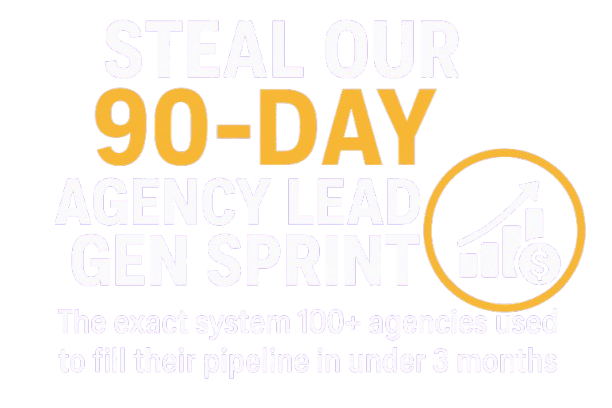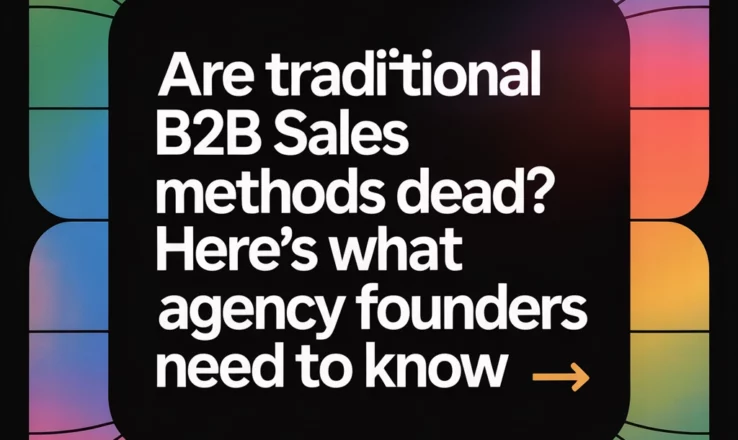
Let me be direct with you: if you're still running your agency sales like it's 2015, you're hemorrhaging deals to competitors who've figured out what actually works in 2025.
The cold, hard truth? 83% of your prospects have already made their buying decision before they ever talk to you. That fundamental shift has made most traditional B2B sales approaches not just ineffective, but counterproductive.
I've spent the last 15 years building and scaling agencies, and I've watched this transformation firsthand. The agencies that thrived through this shift weren't the ones with the best relationship builders or the smoothest talkers. They were the ones who recognized that buyer behavior had fundamentally changed, and then completely rebuilt their sales processes around that new reality.
Today, I'm going to show you exactly what's broken about traditional B2B sales methods, what's replaced them, and most importantly, how to implement these new approaches in your agency right now. This isn't theory, these are the frameworks I use in my own companies and teach to agency founders who've used them to scale from six to eight figures.
The Death of Linear Sales: Why Your Old Playbook Is Failing
Here's what traditional B2B sales looked like for decades: marketing generated leads, sales qualified them, then guided prospects through a predictable, linear journey from awareness to close. Sales reps were educators, relationship builders, and the primary source of information about solutions.
That model is dead. And I can prove it with numbers.
Gartner's research shows that by 2025, 80% of B2B sales interactions will occur through digital channels. More telling: 75% of B2B buyers and sellers now prefer digital self-serve and remote interactions over traditional in-person meetings.
But here's the statistic that should fundamentally change how you think about sales: Before your prospects ever reach out to you, they've already completed 83% of their buying journey.
Think about what that means. Your prospects have:
- Identified their problem
- Researched potential solutions
- Compared alternatives
- Formed opinions about vendors
- Often narrowed down to 2-3 final options
By the time they fill out your contact form or respond to your outreach, they're not looking for education, they're looking for validation that you can deliver on what they've already decided they need.
The traditional sales funnel that moved prospects from awareness to interest to consideration to decision? It's been flipped on its head. Your prospects are entering your funnel at the consideration or decision stage, and they expect you to meet them there.
What Changed: The Four Seismic Shifts That Killed Traditional Sales
Let me walk you through the four fundamental changes that made traditional B2B sales obsolete, and why understanding these shifts is critical for rebuilding your approach.
Shift 1: Information Asymmetry Disappeared
Historically, sales reps held all the power because they controlled access to information. Want to know about pricing? You had to talk to sales. Need technical specifications? Schedule a demo. Curious about implementation timelines? Let's set up a discovery call.
That information advantage is gone. Your prospects can now find detailed information about your services, pricing models, case studies, and even client feedback without ever talking to you. They're reading your competitors' content, watching their webinars, and joining industry communities where your past clients share honest feedback about working with agencies.
The action item: Stop trying to gatekeep information. Instead, become the source of the most comprehensive, valuable information in your space. This builds trust and positions you as the obvious choice when prospects are ready to move forward.
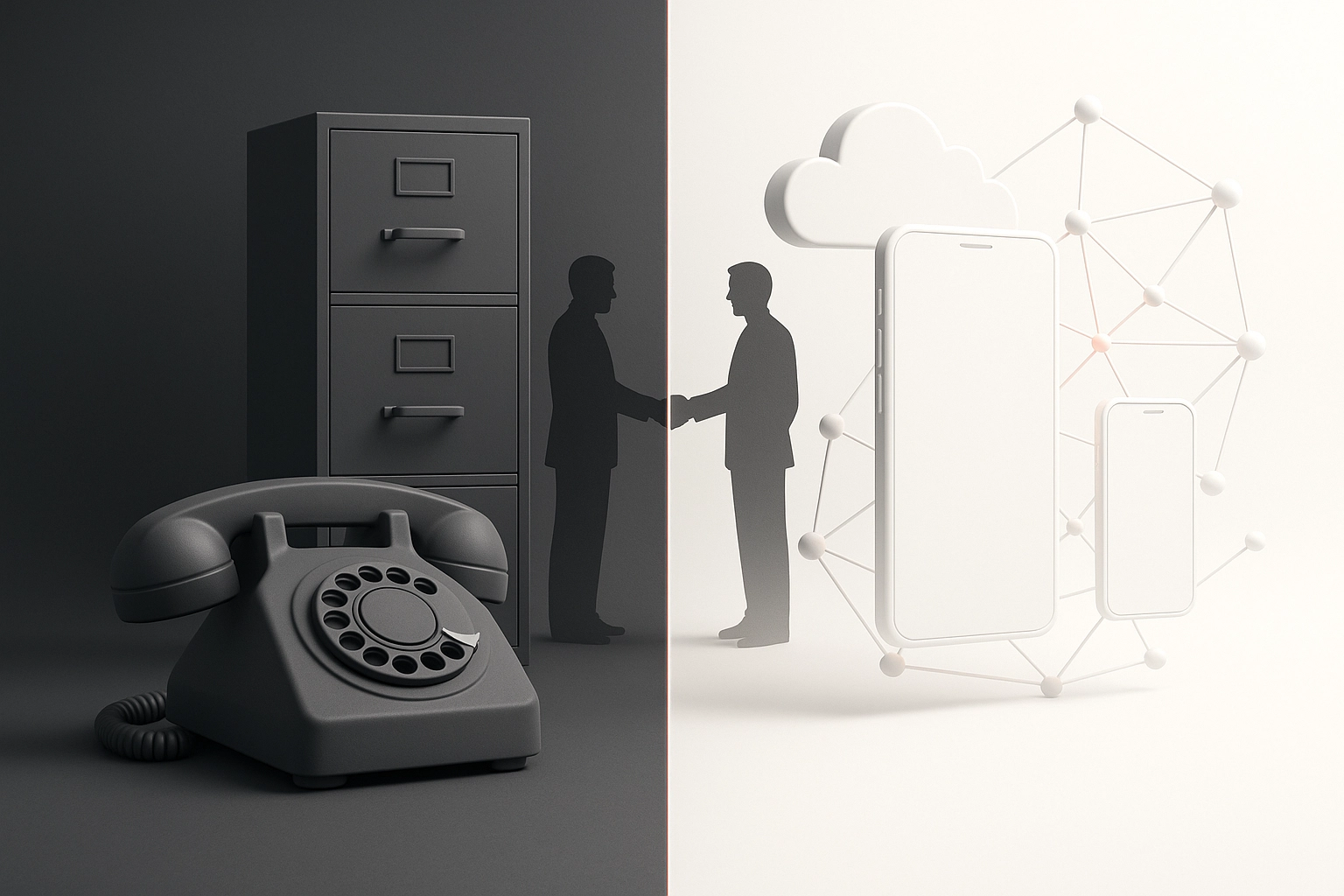
Shift 2: Buying Committees Became the Norm
The average B2B purchase decision now involves 6-10 stakeholders across multiple departments. Your contact at the company might love your proposal, but they need to sell it internally to IT, finance, legal, and executive leadership.
Traditional sales approaches focused on building relationships with individual decision-makers. But in today's environment, you need to equip your champion with materials that help them sell your solution internally to stakeholders you may never meet.
The action item: Develop content and materials specifically designed for internal selling. Create stakeholder-specific value propositions, ROI calculators, and implementation roadmaps that your champion can use to build consensus.
Shift 3: The Buyer Journey Became Non-Linear
The old funnel was predictable: awareness → interest → consideration → decision. Today's buyer journey looks more like a pinball machine. Prospects might start with a Google search, attend your webinar, download a case study, then go silent for three months before suddenly requesting a proposal.
They're consuming content across multiple channels, comparing options, seeking peer recommendations, and revisiting their decision criteria multiple times throughout the process.
The action item: Build nurture sequences that accommodate non-linear journeys. Use behavior-triggered emails, retargeting ads, and multi-channel touchpoints to stay relevant regardless of where prospects are in their process.
Shift 4: Trust Building Moved Online
Relationship building used to happen primarily through in-person meetings, industry events, and phone calls. Now, trust is built through consistent value delivery across digital touchpoints.
Your LinkedIn content, email newsletters, webinars, and even how quickly you respond to initial inquiries all contribute to relationship building in ways that didn't exist in traditional sales.
The action item: Systematize your digital relationship building. Develop content calendars, engagement strategies, and response protocols that build trust at scale.
The Revenue Enablement Framework: What Actually Works in 2025
Traditional sales enablement focused on equipping individual sales reps with tools and training. Revenue enablement takes a holistic approach, aligning marketing, sales, and client success teams around the buyer journey.
Here's the framework I've developed and refined across multiple agencies:
Phase 1: Pre-Engagement Preparation
Before any prospect interaction, your revenue team needs complete visibility into:
- How the prospect found you
- What content they've consumed
- Their company's current challenges (based on public information and industry trends)
- Key stakeholders and their likely concerns
- Competitive alternatives they're likely considering
Implementation: Use tools like HubSpot, Salesforce, or Pipedrive to track digital behavior. Set up Google Alerts for prospect companies. Research LinkedIn connections and mutual contacts.
Phase 2: Multi-Channel Orchestration
Instead of linear handoffs from marketing to sales, implement coordinated campaigns across multiple touchpoints:
Week 1: Email case study relevant to their industry + LinkedIn connection request + targeted ads showcasing similar client results
Week 2: Follow-up email with industry-specific insights + phone call + personalized video message
Week 3: Webinar invitation + peer referral introduction + direct mail with dimensional package
This orchestrated approach increases engagement rates by 50% compared to single-channel outreach.
Phase 3: Value-First Interactions
Every prospect interaction should deliver immediate value, regardless of whether they buy from you. This might include:
- Free audit or assessment
- Industry benchmark report
- Introduction to potential partners or vendors
- Actionable insights about their current challenges
The psychology: When prospects receive value before making any commitment, they're more likely to engage in good faith and less likely to treat you as just another vendor.
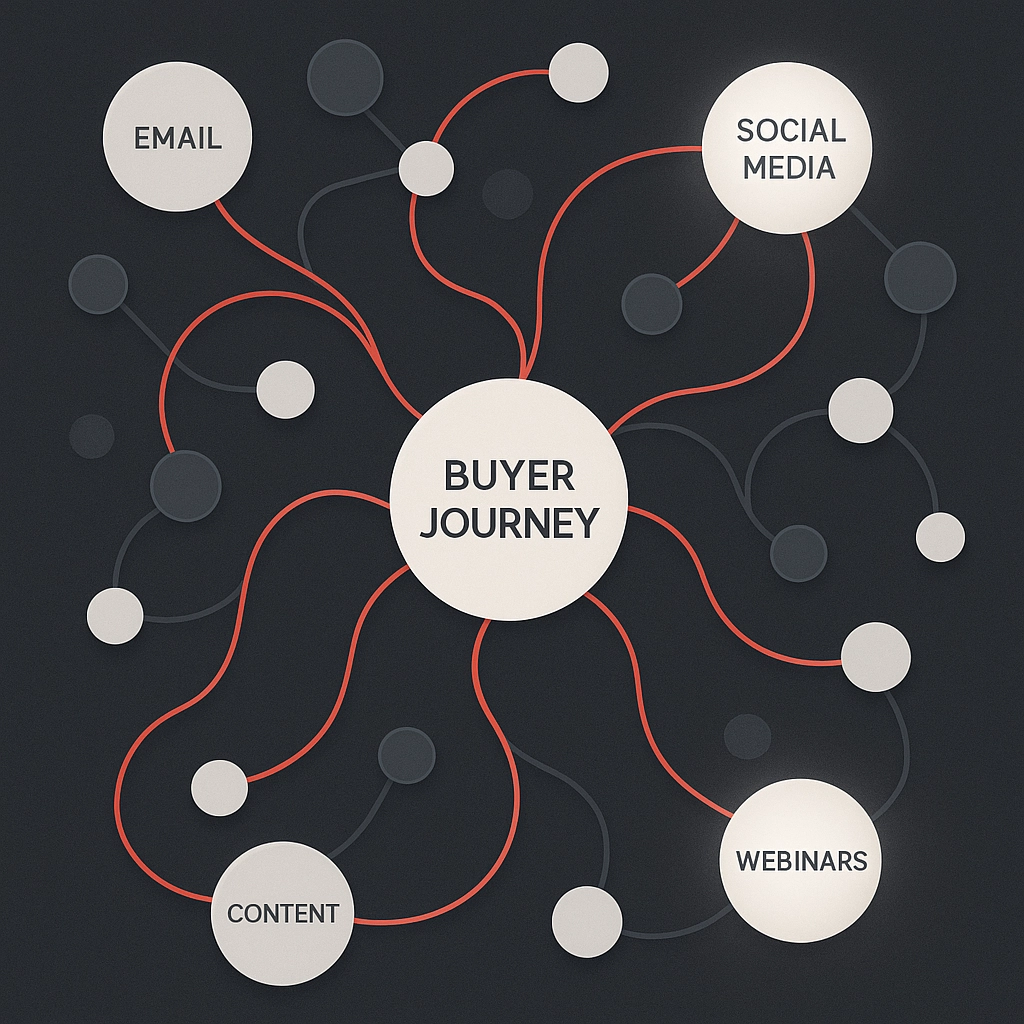
The Modern Agency Sales Process: Step-by-Step Implementation
Now let's get tactical. Here's exactly how to implement these concepts in your agency, starting today.
Step 1: Audit Your Current Lead Sources
Pull data from the last 12 months and categorize every lead by source:
- Organic search
- Paid advertising
- Social media
- Referrals
- Cold outreach
- Events/speaking
- Content marketing
Calculate cost per acquisition and lifetime value for each source. You'll likely find that your highest-converting leads come from sources where prospects discovered you organically: not from traditional sales outreach.
Step 2: Build Your Digital Authority Infrastructure
Your prospects are researching you before they engage. Make sure they find exactly what they need to move forward:
Essential Assets:
- Detailed case studies with specific results and client testimonials
- Industry-specific landing pages that speak directly to different verticals
- Resource library with guides, templates, and tools prospects can use immediately
- Active social media presence with consistent, valuable content
- Podcast appearances or speaking opportunities that position you as an expert
Step 3: Implement Behavior-Triggered Nurture Sequences
Set up automated email sequences triggered by specific behaviors:
Downloaded case study trigger:
- Day 1: Similar case studies in their industry
- Day 3: Behind-the-scenes process explanation
- Day 7: Client interview or video testimonial
- Day 14: Invitation to schedule a strategy call
Attended webinar trigger:
- Day 1: Recording + additional resources mentioned
- Day 3: Related case study
- Day 7: Invitation to book a follow-up discussion
- Day 14: Introduction to a current client in similar situation
Step 4: Create Internal Selling Materials
Remember, your champion needs to sell your solution internally. Create materials specifically for this:
ROI Calculator: Interactive tool showing potential returns from working with you
Stakeholder-Specific One-Pagers: Value propositions tailored to IT, finance, marketing, and executive concerns
Implementation Timeline: Clear roadmap showing what happens in the first 30, 60, and 90 days
Risk Mitigation Document: Addressing common concerns and how you handle potential challenges

Step 5: Implement Multi-Touch Cadences
Instead of hoping prospects respond to a single outreach attempt, use coordinated sequences across multiple channels:
Initial Outreach Sequence:
- Touch 1: Personalized email with relevant case study
- Touch 2: LinkedIn connection request with personalized note
- Touch 3: Phone call (leave voicemail referencing email)
- Touch 4: Follow-up email with additional resource
- Touch 5: LinkedIn message with industry insight
- Touch 6: Final email with different angle or referral offer
Timing: Space these touches 3-4 days apart over 2-3 weeks.
Step 6: Build Account-Based Marketing Campaigns
For high-value prospects, create campaigns targeting the entire buying committee:
Research Phase: Identify 5-10 key stakeholders at target accounts
Content Creation: Develop account-specific content addressing their unique challenges
Multi-Channel Deployment: Use LinkedIn ads, email, direct mail, and retargeting to reach all stakeholders simultaneously
Coordination: Align messaging across all touchpoints to create a cohesive experience
Advanced Strategies: What Separates Elite Agencies from Everyone Else
Once you've mastered the fundamentals, these advanced strategies will help you dominate your market:
Strategy 1: Reverse Engineering Competitor Wins
When prospects choose competitors over you, most agencies write it off as a learning experience. Elite agencies systematically analyze these losses to identify patterns.
Implementation:
- Conduct detailed loss analysis interviews with prospects who chose competitors
- Identify common objections, decision criteria, and differentiators
- Adjust messaging, pricing, and service offerings based on patterns
- Develop competitive battlecards addressing common concerns
Strategy 2: Client Success as Sales Tool
Your happiest clients are your best sales team. But most agencies don't systematically leverage this.
Implementation:
- Create a formal client advocacy program with incentives for referrals
- Develop co-marketing opportunities with top clients
- Host client roundtables and networking events where prospects can interact with satisfied clients
- Create video testimonials that address specific objections or use cases
Strategy 3: Consultative Selling at Scale
Traditional consultative selling doesn't scale because it requires extensive one-on-one time with prospects. Modern agencies use content and automation to deliver consultative insights at scale.
Implementation:
- Develop industry-specific assessment tools that provide personalized insights
- Create interactive content that adapts based on user responses
- Use chatbots and AI to qualify leads and provide initial recommendations
- Offer group strategy sessions or workshops that deliver value to multiple prospects simultaneously
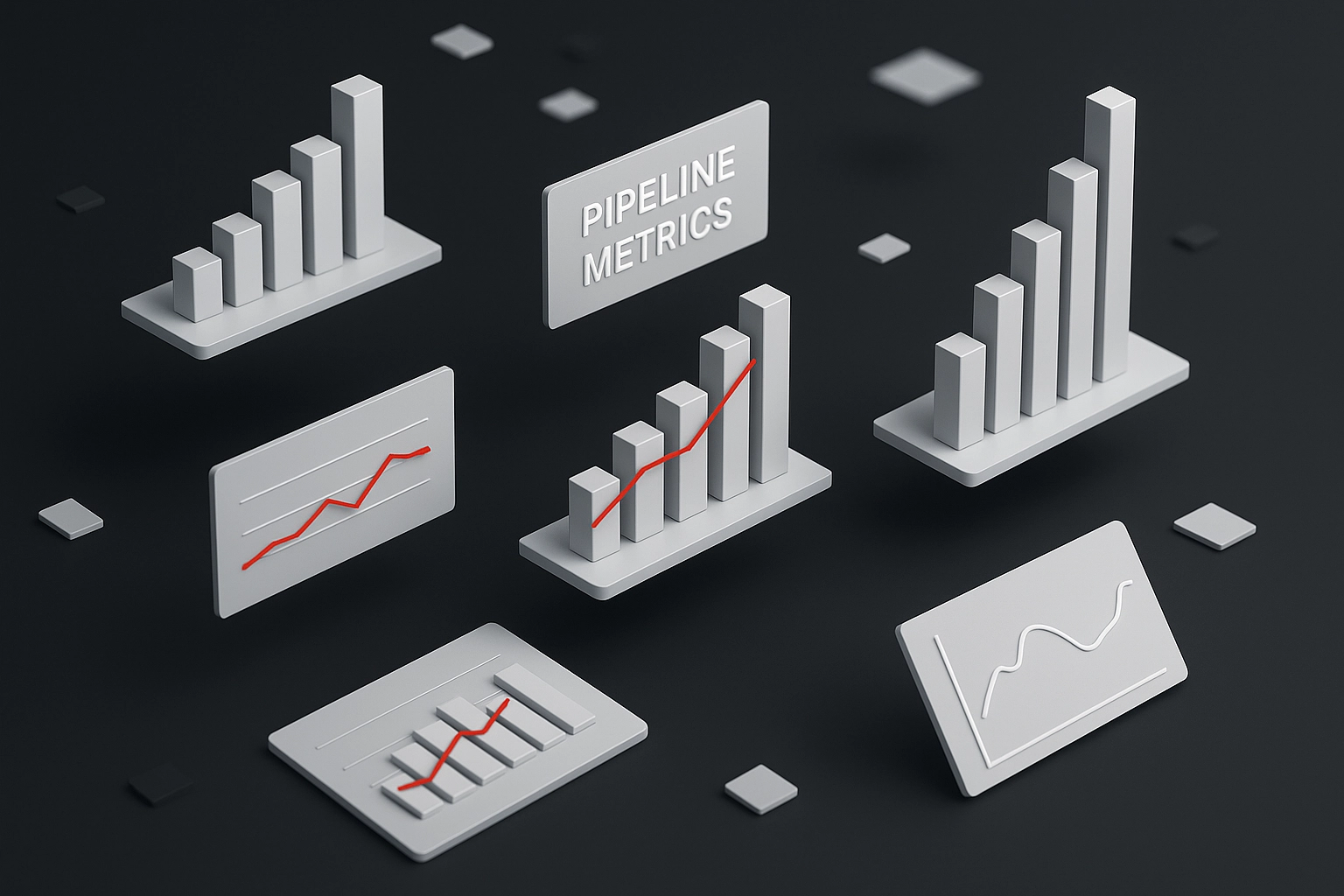
Measuring Success: KPIs That Actually Matter
Traditional sales metrics like calls made or emails sent are vanity metrics in today's environment. Focus on these instead:
Engagement Quality Metrics
- Time spent consuming your content
- Email open and click-through rates for nurture sequences
- Social media engagement and shares
- Webinar attendance and completion rates
Pipeline Velocity Metrics
- Time from first touch to qualified opportunity
- Conversion rates between pipeline stages
- Average deal size and profit margins
- Customer acquisition cost by channel
Relationship Building Metrics
- Response rates to outreach
- Meeting acceptance rates
- Referral rates from existing clients
- Net Promoter Score from prospects (even those who don't buy)
Common Implementation Mistakes (And How to Avoid Them)
After implementing these strategies with hundreds of agencies, I've seen the same mistakes repeatedly:
Mistake 1: Trying to Implement Everything at Once
Start with one or two strategies and perfect them before adding complexity. I recommend beginning with behavior-triggered email sequences and multi-channel outreach cadences.
Mistake 2: Focusing on Tools Instead of Strategy
The latest sales automation platform won't fix a fundamentally flawed approach. Get your strategy right first, then find tools that support it.
Mistake 3: Neglecting Internal Alignment
Revenue enablement requires tight coordination between marketing, sales, and client success teams. Establish clear communication protocols and shared goals before launching new initiatives.
Mistake 4: Expecting Immediate Results
These strategies build momentum over time. Expect 3-6 months to see significant results, but once they kick in, they create compound effects that traditional methods can't match.
The Path Forward: Your Next Steps
Traditional B2B sales methods aren't completely dead, but they're dying fast. The agencies that will dominate the next decade are the ones implementing these new approaches today.
Here's what you need to do right now:
- Audit your current sales process using the framework I outlined above
- Identify your highest-converting lead sources and double down on them
- Implement behavior-triggered nurture sequences for your most common prospect actions
- Create internal selling materials that help your champions sell for you
- Start building digital authority through consistent, valuable content
The transformation from traditional to modern B2B sales isn't optional: it's inevitable. The question is whether you'll lead this change in your market or get left behind by competitors who embrace it first.
Want to dive deeper into specific implementation strategies? Check out my comprehensive agency training resources where I break down each of these concepts with detailed tutorials and templates you can implement immediately.
The old way of selling is dead. But what's replaced it is more effective, more scalable, and more profitable than anything we had before. The agencies that recognize this shift and act on it will dominate their markets for the next decade.
[IMAGE_HERE]
